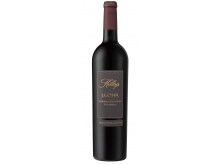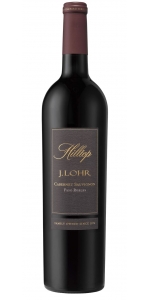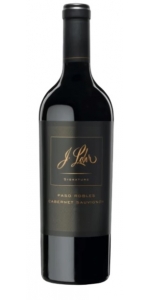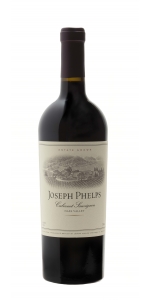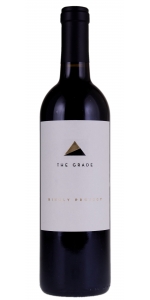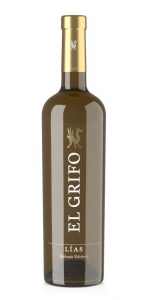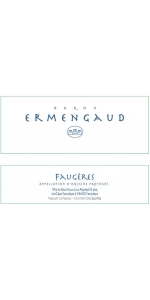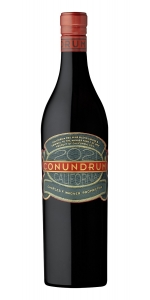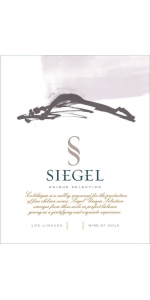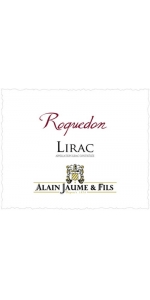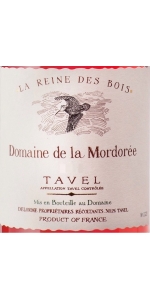J. Lohr Hilltop Cabernet Sauvignon 2021
| Country: | United States |
| Regions: | California California (Paso Robles) |
| Winery: | J Lohr |
| Grape Type: | Cabernet Sauvignon |
| Vintage: | 2021 |
| Bottle Size: | 750 ml |
J. Lohr Hilltop Cabernet Sauvignon is made from 94% Cabernet Sauvignon, 3% Petit Verdot, 2% Malbec, 1% Cabernet Franc.
Displays blackberry and blueberry compote aromas garnished with crushed violet, cracked pepper, and black tea. Plump fruit on the palate with fine-grained tannins. Juicy layers of black and red currants lead to a bright finish accented by pastry notes from the 16 months aging in French cooperage.
-Tasting Panel 94 Points
-Wine Enthusiast 94 Points
J Lohr Signature Paso Robles Cabernet Sauvignon is made from 80% Cabernet Sauvignon 6% Cabernet Franc 6% Saint Macaire 4% Petit Verdot 4% Malbec.
J. Lohr Signature Cabernet Sauvignon was first produced to honor the 80th birthday of founder Jerry Lohr. This limited release was specially selected and blended from the exceptional 2016 vintage in Paso Robles. It is both a tribute to Jerry's pioneering efforts in the region and our red wine portfolio's ultimate expression of Cabernet Sauvignon. VINEYARDS & CELLAR Beck Vineyard, in the Creston District of Paso Robles, is a unique, high elevation site that sits at 1,700 feet above the early morning fog line. Its calcareous soils and cooling afternoon winds are perfect for growing Cabernet Sauvignon. The Cabernet from this vineyard ripens early with excellent color, purity of fruit, and phenolic maturity. Incorporation of Cabernet Franc brings freshness to the blend, while the rare Bordeaux variety, Saint Macaire, brings density and a savory character. Petit Verdot and Malbec add structure, color, and a component of bright fruit. The hand-harvested grapes were held separate at harvest and berry-sorted into six-ton open top tanks for fermentation. Maceration took place on the skins for five days, before early pressing to achieve ideal tannin extraction. Aged 19 months in 100% new French oak from coopers Nadalie and Sylvain.
Review:
The nose on this luxury-level bottling is pure and refreshing, offering aromas of black cherry, loamy soil, dried mint and caramel-laced coffee. The palate is framed by upright tannins, yet is soft enough to enjoy now, showing deep flavors of black currant, dried herb, milk chocolate and toffee. Drink 2020–2040.
-Wine Enthusiast 95 Points
J Lohr Signature Paso Robles Cabernet Sauvignon is made from 80% Cabernet Sauvignon 6% Cabernet Franc 6% Saint Macaire 4% Petit Verdot 4% Malbec.
J. Lohr Signature Cabernet Sauvignon was first produced to honor the 80th birthday of founder Jerry Lohr. This limited release was specially selected and blended from the exceptional 2016 vintage in Paso Robles. It is both a tribute to Jerry's pioneering efforts in the region and our red wine portfolio's ultimate expression of Cabernet Sauvignon. VINEYARDS & CELLAR Beck Vineyard, in the Creston District of Paso Robles, is a unique, high elevation site that sits at 1,700 feet above the early morning fog line. Its calcareous soils and cooling afternoon winds are perfect for growing Cabernet Sauvignon. The Cabernet from this vineyard ripens early with excellent color, purity of fruit, and phenolic maturity. Incorporation of Cabernet Franc brings freshness to the blend, while the rare Bordeaux variety, Saint Macaire, brings density and a savory character. Petit Verdot and Malbec add structure, color, and a component of bright fruit. The hand-harvested grapes were held separate at harvest and berry-sorted into six-ton open top tanks for fermentation. Maceration took place on the skins for five days, before early pressing to achieve ideal tannin extraction. Aged 19 months in 100% new French oak from coopers Nadalie and Sylvain.
Review:
Almost opaque in the glass, this luxury bottling entices with intense aromas of black currant and blackberry sauce on the nose, with savory hints of dark olive and caramel spice. It's quite dry on the palate, where licorice, violet and cassis flavors linger amidst the polished tannins
-Wine Enthusiast 95 Points
Joseph Phelps Vineyards Cabernet Sauvignon is made from 92% Cabernet Sauvignon, 4% Petit Verdot, 2% Cabernet Franc, 1% Merlot, 1% Malbec.
A classic Napa Valley Cabernet Sauvignon with inviting violet, dark fruit, tobacco, subtle baking spice and earthy dried herb aromatics. The palate is filled with expressive black cherry, blackberry and dark plum, hints of spice box and sweet vanilla bean. A focused, concentrated wine with youthful energy and freshness nimbly balanced by supple tannin structure and finesse.
Review:
Blackcurrants, spiced cedar and dark spices with bark undertones. Full-bodied with very fine, velvety tannins. Textured and compact with a firm, lingering finish. Tight at the end. Needs time to open.
-James Suckling 94 Points
Sojourn Cabernet Sauvignon Oakville is made from 98% Cabernet Sauvignon and 2% Petit Verdot.
This Cabernet Sauvignon was produced primarily from grapes sourced from Oakville Ranch Vineyard, sitting at 1,000 to 1,400 feet above sea level with a westward aspect overlooking Napa Valley. The vineyard was replanted in 2006 by esteemed organic viticulturist Phil Coturri, and is fast gaining a reputation for producing some of the best Cabernet Sauvignon in Napa Valley. The rocky clay, loam and basalt soils have a heavy iron influence providing structure, power and depth. Cabernet Sauvignon lots fermented separately from two other vineyards that reside in alluvial soils along the Oakville foothills were blended in to add expressive fruit character and lush tannins.
This blend of our generous and supple Oakville Cabernet Sauvignon is dominated by Oakville Ranch Vineyard. Located in the hills among famous neighbors Dalla Valle, Pedregal and Backus vineyards, Oakville Ranch produces powerful, rich, structured wines. Cabernet Sauvignon wines made from two other vineyards along Skellenger Lane were blended in to add expressive fruit character and lush tannins. Each component of this blend spent four weeks fermenting on skins to ensure that the tannins and fruit flavors were balanced. The resulting wine is rich and vibrant, offering vivid flavors of blackberry, raspberry, cassis and mocha.
Review:
Powerful and richly flavored, this 100% Cabernet Sauvignon carries lush flavors of red and black plum, wet tobacco and layers of oak. Tannins are densely packed, velvety-textured and persistent. A wine of generosity.
-Wine Enthusiast 93 Points
The Grade Cellar Kingly Project Cabernet Sauvignon is made from Napa Valley Cabernet Sauvignon.
"This is a noble expression of Cabernet Sauvignon" in full regalia, with decadent aromas and a mouthfeel viscous and sleek. "This vintage of the Kingly Project Cabernet Sauvignon enters the scene" -- Thomas Rivers Brown
Review:
The 2019 Cabernet Sauvignon Kingly Project is fabulous. A wine of vertical power and thrust, the 2019 soars out of the glass, showing magnificent intensity from start to finish. Black cherry, scorched earth, licorice, plum and chocolate give this substantial Cabernet tons of complexity. I would cellar the 2019 for at least a few years to allow the tannins to soften. -
- Antonio Galloni 97 Points
J. Lohr Hilltop Cabernet Sauvignon is made from 95% Cabernet Sauvignon 3% Petit Verdot 1% Malbec 1% Cabernet Franc.
Dense and soft with elegant layers of black cherry, currants, and toasted pastry.
Delicious with rosemary-seasoned ribeye and garlic roasted potatoes with parsnips and fennel.
Review:
The Cabernet Sauvignon, Petit Verdot, Malbec, and Caber- net Franc grapes in this wine were grown in gravelly, lime-laden soils at an elevation of 1,700 feet. Once drawn in by its immediate perfume of dark chocolate and blueberry preserves as well as its silky, plush, mouth-coating texture, you're treated to waves of milk chocolate covered boysenberry. Nutmeg-dusted cedar and dried violets flash across the palate, leaving behind a slightly chalky finish
-Tasting Panel 93 Points
In the late 1960s, Jerry Lohr began an extensive investigation of California grape growing regions – searching for the ideal location for his first vineyard. Jerry was raised on a South Dakota farm; his agricultural roots armed him with an innate sense for the relationship between climate, soil, and location. His research and instincts led him to the Central Coast, an area just beginning to explore its potential for winegrowing.
It’s no coincidence that the Central Coast’s emergence as a world class winegrowing region runs parallel with the establishment and growth of J. Lohr Vineyards & Winery. Founder Jerry Lohr is one of the region’s pioneers and has played a larger-than-life role in bringing the area to prominence.
Jerry’s instincts led him to two regions located about 75 miles apart. In the early 1970s, he chose Monterey County’s Arroyo Seco district for its cool, windy climate and rocky soils as ideal for Chardonnay. In the 1980s, he recognized the potential of Paso Robles for growing Bordeaux varietals, especially Cabernet Sauvignon – given the area’s rich soils and dramatic diurnal temperature swings between warm days and cool nights.
After Jerry Lohr’s nearly decade-long search for the right place to plant his first vineyard, he chose a site in Monterey County that was to become the heart of the Arroyo Seco appellation. Jerry originally planted 280 acres in 1972 and 1973 near Greenfield. Monterey County’s Arroyo Seco appellation has proved ideal for growing layered, complex Chardonnay and Pinot Noir. Brisk winds and fog off Monterey Bay, stony, well-drained soils, and a lack of damaging fall rains all combine to produce grapes with trademark fruit intensity and balancing acidity. In 1974, Jerry unveiled the first J. Lohr winery in San Jose.
In the early 1980s, Jerry Lohr saw the potential for great Cabernet Sauvignon further south. Borrowing a lesson from the French—that great Chardonnay and Cabernet Sauvignon excel in very different growing conditions—Jerry began planting Cabernet Sauvignon and other red varieties in San Luis Obispo County’s little-known Paso Robles region in 1986. With the hands-on devotion of an artisan farmer, Jerry tended to the vines while diligently working toward the creation and development of an adjacent winery and barreling cellars; J. Lohr’s Paso Robles production facility was opened in 1988.
El Grifo Lias Malvasia Volcanica is made from 100% Malvasia Volcanica.
Color: Straw yellow, with light golden hues. Clear and bright.
Aroma: Medium-high intensity of a wine in evolution. Fresh, citrus (orange peel) and tropical (passion fruit and mango) fruits. Flowers (orange blossom, jasmine, violets), fennel, and complex aromas such as silex or flint (phosphorus). Yeast autolysis is reminiscent of the aromas of baked goods and yeast. Bottle ageing brings out hints of dried fruits, honey and caramel.
Taste: Full-bodied, with a lengthy and unctuous texture, very strong natural acidity, citrus freshness, mineral notes and saltiness. Persistent finish.
Residual Sugar 0.5 g/L
Total Acidity 6.02 g/L
pH 3.36
Total SO2 91 mg/L
Baron Ermengaud Faugeres Rouge is made from 80% Syrah, 10% Grenache, 5%, Mourvèdre and 5% Carignan.
The Baron Ermengaud cuvée is named after the lord Ermengaud de Fouzilhon. In the 12 century, the Lord gave land, which was located in Laurens Village, to monks, who built a monastic barn. The monks (Benedictine and then Cistercian) used to cultivate the vineyards, using techniques that were quite wise and modern at the time. The people of Laurens enjoyed and benefited from learning their methods.
This Faugeres is dark red with shades of black cherry. A large complexity of aromas allows us to savor a mix of sun fruits and spices. This powerful and full-bodied wine, with a deep consistency, offers an intensity of ripe fruits. It has a long, rich palate on velvety tannins with raised hints of pepper.
Pairs with roast saddle of lamb with juniper berries; peppered venison with pears.
Review:
"Les Crus Faugères is the only cooperative in this appellation, managing 2,223 acres or nearly half of Faugères’ vines. It puts out a vast array of labels, including Mas Olivier, also recommended here, but Baron Ermengaud was the standout for both its 2019 and 2018 reds. Mostly syrah (80 percent), with grenache, carignan and mourvèdre, all of it hand-harvested off schist parcels, the 2019 shines in its combination of earthiness and brightness. Lively acidity and herbal notes give it a just-picked freshness that energizes the red fruit; the clarity allows a clear view of the earth, too, in shades of schist and iron. It tastes like it’s from a place, with a sense of sun and garrigue that’s transporting."
Wine & Spirits Magazine (June 2021), 94 points
Conundrum Red is made from a blend of Zinfandel, Petite Sirah and Cabernet Sauvignon.
Sourced from premier California winegrowing regions, Conundrum Red features dark red varietals including Zinfandel, Petite Sirah and Cabernet Sauvignon. It is serious yet lighthearted, complex and approachable. With lavish fruit flavors and baking chocolate, this wine has smooth tannins that provide a distinctive, soft character. Be daring and drink slightly chilled to enhance the fruit profile and enjoy any time of year.
Siegel Unique Selection Red is made from 45% Cabernet Sauvignon, 35% Carmenere and 20% Syrah
Aged in French oak barrels for 14-16 months.
Viña Siegel Unique Selection is the utmost expression of our best Los Lingues vineyards located in the Alto Colchagua region.
A deep violet color. There are aromas of cassis and cherries with hints of spices, chocolate and violets. This wine is characterised by its complexity and harmony, with a robust tannic structure.
After carefully selecting the optimum harvest date, the grapes are hand selected, then they are de-stemmed and cold macerated for 5-6 days. Alcoholic fermentation occurs at 26-29°C, during this period pump overs are performed daily at the winemaker’s discretion. Post-fermentative maceration occurs for 2 to 3 weeks. The wine is smoothly clarified. Cold stabilisation only occurs when necessary.
Review:
"The blend - Cabernet Sauvignon with 55% Carmenère and Syrah - might not be unique, but this is certainly a special wine from the best zones of Los Lingues, showing serious, aromatic mint, black cherry and cassis fruit, bold tannins and the structure to age further in bottle. 2022-29"
- Tim Atkin MW (Chile 2020 Special Report), 93 pts
Alain Jaume Lirac Rouge Roquedon is made from 60% Grenache, 20% Syrah, 10% Mourvedre, 10% Carignan.
A blend of Grenache, Syrah, Mourvèdre, and Carignan grown on clay and sandy soils, mostly on terraces covered by pebble stones. Lirac is located in front of Chateauneuf du Pape, on the opposite side of the Rhone River.
Lirac Roquedon reveals an intense red garnet color and a nose dominated by a bouquet of red and black ripe fruits (kirsch and wild Blackberry). The mouth is full, with flavors of blackcurrant, liquor and spice. Tannins are both harmonious and elegant. The palate finishes with hints of liquorice and vanilla, which brings length and complexity to the wine.
Traditional wine-making in stainless still vats. Crushed and destemmed grapes. Fermentation temperature : 30°C. 18 days of vatting with pigeages. Ageing mainly in vats and about 10% in oak barrels. Bottling 15 months after the harvest.
Mordoree Tavel Rose Reine des Bois is made from Grenache
Nose: Steady rose, brilliant and cristal clear.
Aromas : very complex : from flowers, white fruits and red fruits (strawberries, pomegranate, rapsberry). Slightly mentho-lated
Palate : fresh, classy, elegant, very long.
Aging capacity : 8 to 10 years.
This wine comes from a parcel planted on a pebbled soil covered with stones, whose geology is typical of the grands crus from the Rhone Valley (a base made of marine molasse from the Miocene period covered with an alpine diluvium from the Villafranchian period). 100 % destemming, cold maceration during 48 h., pneumatic pressing, fermentation at 18° C.
To pair with: roasted and or spicy chicken, duck, goose, fish soup, white meat, seafood and a lot of fishes (tuna, John Dorry, red mulet, etc...).Quite all Asian cuisine. Dishes with garlic, dishes with tomatoes.
Review:
"A blend of 60% Grenache, 20% Syrah, 10% Cinsault and 10% Clairette, the 2022 Tavel La Reine des Bois is a touch darker in hue than its stablemate, the La Dame Rousse, but it's still not among the darkest of Tavels in the glass. That's perfectly okay, as the aromas and flavors are textbook for the appellation: crushed stone, flowering garrigue, ripe cherries and mouthwatering strawberries, all capped off by refreshing citrus-zest notes on the lengthy finish. Full-bodied and full-flavored, it's one of the candidates for top Tavel this year. - Joe Czerwinski"
- Robert Parker's Wine Advocate (May 2023), 93 pts
- back
Young and present, this is an energetic and bold expression of violets, lavender, and cassis mixed with dark chocolate, cherry, plum, and graphite. A wine happy to be tucked away in the cellar, and it’s also expressing itself beautifully now.
Review:
Lovely fragrant blackberry and black cherry fruit, cassis, and rich tobacco spices with lovely fresh earth notes and a sweet kiss of new wood cedar. Incredibly concentrated dark berry fruit with fabulously angular tannins with smooth long beams with crisp edges. Purple florals, dried sagebrush, and chocolate shavings with lids of graphite and deep iron-like mineral character. And a finish of dark saturated fruit that goes and goes for days. There are purple floras too. Polished and bright, with vivacious acidity and freshness evident from the sip to the finish. Wow, this wine.
-Decanter 98-100 Points
Dominus Napa Valley Red Blend is made from 88% Cabernet Sauvignon, 7% Cabernet Franc, 5% Petit Verdot.
The historic Napanook Vineyard, a 124-acre site west of Yountville, was planted in 1838. This vineyard was the source of fruit for some of the finest Napa Valley wines. Estate-bottled in the spirit of the Bordeaux châteaux, Dominus Estate is dry-farmed to allow natural stress and good concentration of fruit. Grape clusters are crop-thinned to allow sun and air to pass in between, helping to achieve full maturation and soften the tannins. Only 20% to 40% new French oak barrels are used in order to limit the extraction of oak notes. To express the unique terroir, the classic Bordeaux grape varietals of Cabernet Sauvignon, Merlot, Cabernet Franc and Petit Verdot are planted with different root stocks best suited for the varying soil composition of gravel, heavy clay and loam.
Reviews:
One of the legendary Dominus, the 2021 Cabernet Sauvignon is unquestionably in the same league as the 2018, 2016, 2015, 2013, 2010, and 1991, and to my mind, wine simply doesn't get any better. Sporting a dense purple hue as well as an incredible perfume of blackcurrants, crushed stone, cedar pencil, smoke tobacco, and baking spices, it s rich, full-bodied, and voluptuously textured, with ripe yet building tannins. It reminds me slightly of the 2010 (maybe the 2013), and I suspect it will have a similar evolution. Hide bottles for 7-8 years, and it will evolve gracefully for 30+ years. Hats off to the team of Christian Moueix and director Tod Mostero.
Jeb Dunnuck 100 Points

